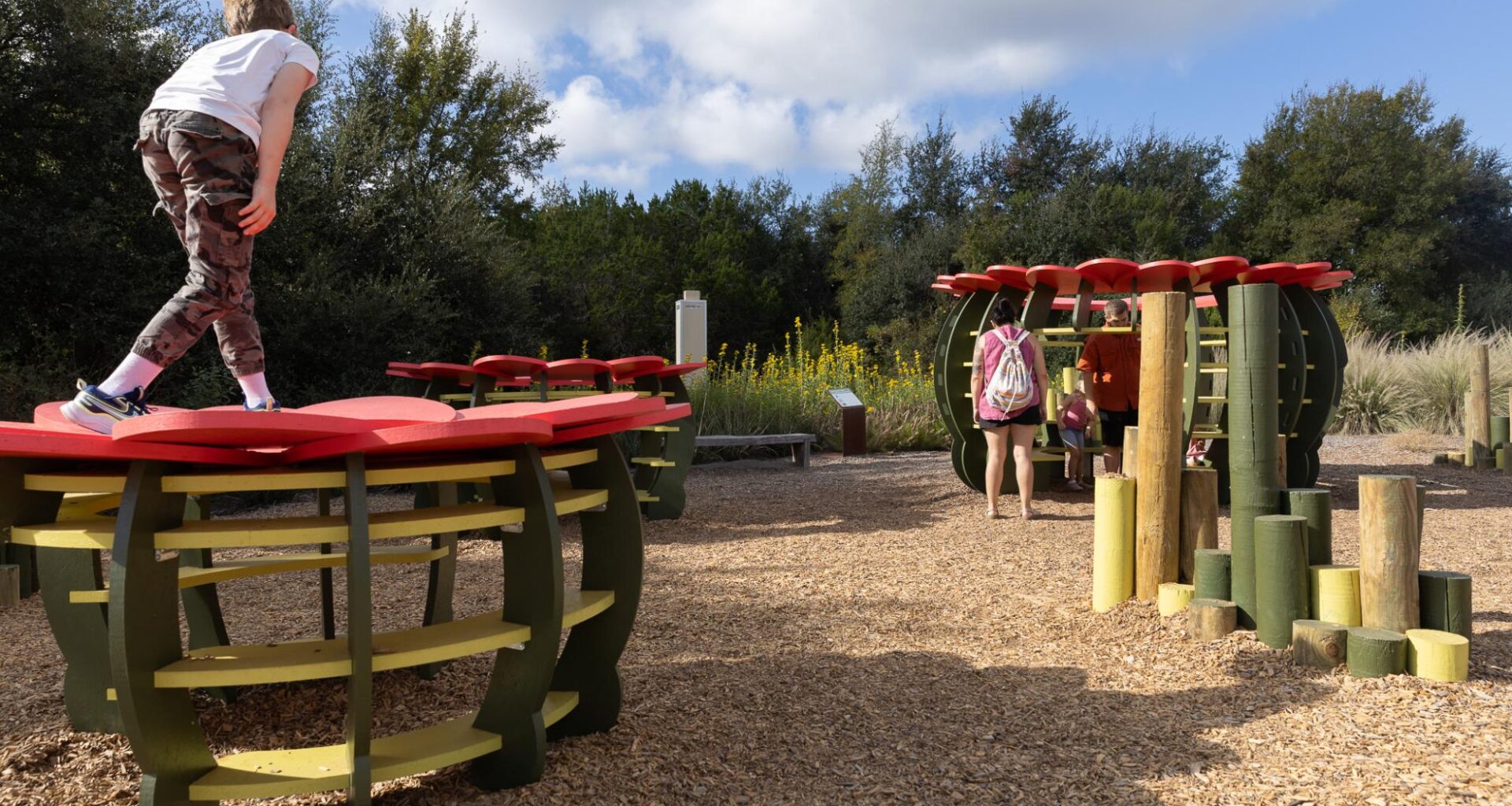Laughter and excited screams interrupted the previously peaceful scene, children exploring unique forts sprawled across the Lady Bird Johnson Wildflower Center’s Fortlandia exhibition.
Open from Oct. 4 until Feb. 1, Fortlandia features eight unique forts designed by architects and artists. The creatives built the forts over the summer after being chosen from a pool of applicants.
“(The Wildflower Center wants) to have art for people to experience,” said Erika Tucker, the director of Hospitality for the Wildflower Center. “Ultimately, this is an art exhibit. It’s a playful one, but it is an art exhibit. It’s critical to all individuals’ happiness to spend time in nature, and to give children more reasons to do that in general is fantastic.”
Suzanne Wyss, MEM and Swyss co-founder and UT landscape architecture alumna, built “Roots Rambler,” featuring intricately woven ropes underneath a wooden ramp that children can jump and climb on. Taking inspiration from the complicated roots that reside under the ground of prairie grass, the fort showed children the magic that happens underground.
“Seeing people engage with the piece is so rewarding, and smiling, laughing and being challenged,” Wyss said. “A good play piece is a challenge that should make you question your next move, or how you want to interact with (the) piece, and seeing kids play is so fun.”
Tucker said guests vote for their favorite fort by scanning the QR code found in front of the site. At the end of the season, the fort with the most votes will win the “People’s Choice Award.”
“I love that it’s a play element for kids, but I think where my heart is (to get) adults to play,” Wyss said. “I think (the fort) has done that as well, so that makes me happy.”
Jobe Corral Architects, the company that built “Cactlandia,” found inspiration through the Texas barrel cactus. The fort includes three various-sized cacti for both children and adults to explore.
“I like the idea of architecture being very playful and sparking curiosity in people,” said Sophia Olivares, a Jobe Corral Architects intern and fifth-year architecture and Plan II student. “I feel like this installation does a really good job of that.”
After the exhibition ends, the fort creators will donate or sell their forts, ensuring none of the materials go to waste. Ada Corral, a principal at Jobe Corral Architects, said the organization plans to donate “Cactlandia” to Community First Village.
“As a student, this is my first thing I’ve seen physically come into fruition in the world,” said Ben Wierschem, a Jobe Corral Architects intern and architecture masters student. “I thought that was really cool and interesting … because I’ve done so many things digitally, but when it comes into the real world, you notice so many things that are a lot more complicated than just having it perfectly on a computer.”
Tucker said about 125,000 people visited the Wildflower Center during Fortlandia’s opening last year. Admission is free for UT students, faculty and staff with an ID.
“The best part of it is that every year we see more and more guests coming, and it helps grow our mission,” Tucker said. “It helps grow the vision, the conservation (and) all the work that everyone at the center is doing.”

